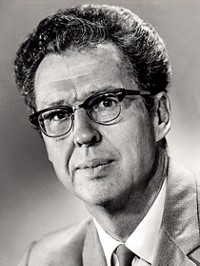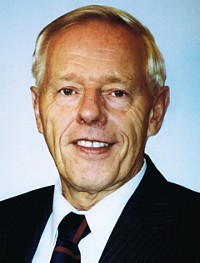Advertisement
Grab your lab coat. Let's get started
Welcome!
Welcome!
Create an account below to get 6 C&EN articles per month, receive newsletters and more - all free.
It seems this is your first time logging in online. Please enter the following information to continue.
As an ACS member you automatically get access to this site. All we need is few more details to create your reading experience.
Not you? Sign in with a different account.
Not you? Sign in with a different account.
ERROR 1
ERROR 1
ERROR 2
ERROR 2
ERROR 2
ERROR 2
ERROR 2
Password and Confirm password must match.
If you have an ACS member number, please enter it here so we can link this account to your membership. (optional)
ERROR 2
ACS values your privacy. By submitting your information, you are gaining access to C&EN and subscribing to our weekly newsletter. We use the information you provide to make your reading experience better, and we will never sell your data to third party members.
Materials
ACS Award in Polymer Chemistry
Sponsored by ExxonMobil Chemical Co.
by Alexander H. Tullo
January 25, 2010
| A version of this story appeared in
Volume 88, Issue 4
Few scientists have shed more light on how polymers move around and orient themselves on the molecular level than Timothy P. Lodge, 55, professor of chemistry at the University of Minnesota.
Much of Lodge’s career has focused on polymer diffusion. “In my judgment, Tim Lodge is one of the top two or three people in the world in this area,” writes Frank S. Bates, the head of the chemical engineering and materials science department at the University of Minnesota.
In particular, Lodge has probed the reptation model of “snakelike” polymer motion. In the 1980s and early 1990s, he focused on how branched structures, such as three- and 12-arm polystyrenes, reduced such movement. To find out what would happen to the motion when most of the polymer matrix is stationary, he cross-linked some of the polymers and found that the reptation model still described the motion of the remaining free polymers well.
At that time, there was a problem with the reptation model, Lodge recalls. The model predicted that the viscosity would increase with the cube of the molecular weight (MW3) and the diffusion of the polymer would decrease according to MW2. Experimental data seemed to put these two predictions “at odds with each other,” he says. The viscosity was dependent on MW3.4, and experiments indicated that the diffusion was acting according to prediction. Lodge showed that the diffusion was actually dependent on MW–2.4, establishing that the two results were consistent in that they deviated from the reptation model by the same extent.
In more recent years, Lodge has turned his attention to micelle-forming block copolymers. One milestone was being the first, with colleague Marc Hillmyer, to prepare multicompartment micelles such as those first envisioned by University of Mainz professor Helmut Ringsdorf. Lodge says micelles such as these might be used in drug delivery as a way to carry multiple compounds to the same area simultaneously. He has also turned his attention to ionic liquids, attempting to combine them with block copolymers to provide mechanical integrity and prescribed nanostructure.
Lodge emigrated from Manchester, England, to Madison, Wis., when he was 14 years old because his father, an engineer, took a job as a professor at the University of Wisconsin. He attended Harvard University, majoring not in chemistry but in applied mathematics. “To be blunt about it, I didn’t do very well in the freshman chemistry course,” he says. He did go on to graduate school in chemistry at the University of Wisconsin, earning a Ph.D. in chemistry there in 1980. After postdoctoral research at the National Bureau of Standards, he joined the faculty of the University of Minnesota in 1982.
Lodge has authored or coauthored some 250 papers and wrote the book “Polymer Chemistry” (2nd Ed.) with Paul C. Hiemenz. He is also editor of the ACS journal Macromolecules. He received the American Physical Society’s Polymer Physics Prize in 2004.
Lodge will present the award address before the Division of Polymer Chemistry.





Join the conversation
Contact the reporter
Submit a Letter to the Editor for publication
Engage with us on Twitter